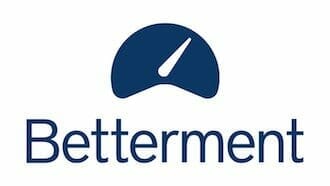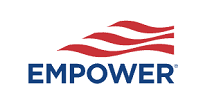As you probably know by now, you’re going to need a lot of money if you want to retire in this day and age.
So it’s good to see that average balances are going up with retirement accounts.
But how do you know if you’re using the best possible retirement account for your exact situation?
For example, did you know if you make too much money and have access to a 401(k) at work, you might be losing out on valuable tax breaks when contributing to an IRA?
In this article I’ll review both Roth IRAs and Traditional IRAs—including the similarities and differences—so you can see which option is best for you.
What’s Ahead:
Roth IRA vs. Traditional IRA
Traditional IRA Roth IRA
Contribution Amount $6,500; $7,500 if you’re over 50 years old $6,500; $7,500 if you’re over 50 years old
Age Restrictions Once you hit 70 ½ years old, you can no longer contribute None
Income Restrictions None Must make less than $138,000 per year, as a single filer. $218,000 for married filing jointly.
Taxes Contributions are tax-deductible (income limits apply if you are covered by a retirement plan at work) Tax-free withdrawals
Withdrawals Required minimum distribution at 70½ You can withdraw your money (tax-free) at any time after 59 ½
If you’re trying to decide between a Roth IRA and a Traditional IRA, you’re not alone. I was in this situation recently. Historically I’d always had a Roth IRA, but when it came time to roll some funds over to my new account, I had a choice to make – Roth IRA or Traditional IRA.
Both types of IRAs are excellent retirement accounts—but they’re each for different people in different situations. Before you choose one, consider some of the following key attributes of each type:
Contribution amount
Both Traditional IRAs and Roth IRAs have the same contribution amount per tax year—$6,500 (based on the 2023 guidelines). This limit jumps to $7,500 if you’re over 50 years old (called a ‘catch-up’ contribution).
- Winner: Tie—both have the same limits on contribution
Age restrictions
This is an uncommonly known thing, but Traditional IRAs have an age restriction by which you can contribute money. Once you hit 70 ½ years old, you can no longer contribute funds to a Traditional IRA. You have to be under that age and have earned income. A Roth IRA, on the other hand, does not have any age restriction—so you can contribute to one as long as you’d like.
- Winner: Roth IRA—there are no age restrictions
Income restrictions
In order to contribute to a Roth IRA, you have to have a modified adjusted gross income of less than $153,000 per year if you’re filing single. Married couples who file jointly can have a MAGI up to $228,000 if they’d like to contribute to a Roth IRA. These numbers are current as of the 2018 tax year but can change based on the year.
A Traditional IRA doesn’t have income restrictions—so you can contribute to one regardless of how much you make. This makes for a sound option for those who are making more than the maximum to contribute to a Roth IRA.
There are, however, limits by which you stop getting tax deductions if you’re already being covered by a retirement plan at your job. If this is the case, once you pass a certain threshold, you either get a partial deduction or no deduction at all. For example, married couples filing jointly and making over $99,000 per year would get no deduction.
- Winner: Traditional IRA—despite the deduction restrictions, it allows people with any income to contribute
Taxes
One of the biggest benefits of having a Roth IRA is the tax-free withdrawals. In most cases, any earnings and withdrawals you make in retirement won’t be hit with income taxes. This is because the money you deposit into a Roth IRA has already been taxed. I’ll discuss more below on who this will benefit most.
Traditional IRAs also enjoy tax benefits, but at a different time. As I alluded to above, your contributions to a Traditional IRA are tax-deductible on both the federal and state level. This means you get a tax break during that tax year, but you’ll have to pay income tax on the withdrawals when you take money out in retirement.
- Winner: Tie—both have tax benefits, but they come at different times
Withdrawals
Here is where you’ll find one of the biggest differences between the two types of IRAs. With a Roth IRA, you can withdraw your money (tax-free) at any time after 59 ½ without any penalties—granted that money has been in the account for at least five years. If you don’t need the money, you can let it sit there and grow. And since there are no age restrictions, you can continue to contribute.
Traditional IRAs, on the other hand, require you to take money out once you hit 70 ½ years of age. This amount is called the required minimum distribution, or RMD. The challenge is that these withdrawals are not only mandatory, but they’re taxable. So if you reach age 70 ½ and you have no need for the money, you’re stuck and you still have to take it out and pay the taxes.
- Winner: Roth IRA—not being forced to withdraw money is always nice…
Where to open a Roth or Traditional IRA overview
| Betterment | Ally Invest | Empower | |
|---|---|---|---|
| Best For | Hands-off investing | Every day traders | Complete wealth management |
| Fees | 0.25% yearly | 0.30% yearly | 0.89% up to $1 million |
| Services Offered | -Managed portfolio -Access to certified financial planner -Socially responsible investing | -$4.95 stock trades -Self-directed trading -Robo portfolio | -Personalized asset allocation -Fee analyzer -Portfolio analysis -Net worth tracker -Budgeting |
Where to open a Roth or Traditional IRA
By now you’re an expert on IRAs, right? So it’s time to open your first retirement account (or another one if you’ve decided you want a different type).
Here are three of our most highly recommended brokers to do this at.
Betterment

Betterment is perfect for beginners. They’re a robo-advisor that makes investing a liberating experience. You won’t have to worry about constantly changing investments and rebalancing your portfolio, just pick a risk level you’re comfortable with and Betterment does the rest.
Plus, you’ll have to pay just 0.25% to have your portfolio fully managed through Betterment (which rises to 0.40% when you balance reachers over $100,000).
Learn more about Betterment here.
Ally Invest

The cool thing about Ally Invest is the two options you get for managing your portfolio. They have a roboadvisor option, which like Betterment, will automatically rebalance your portfolio and choose your investments for you.
This is nice if you want a hands-off approach. But if you do want to pick your own investments, Ally Invest comes with some of the cheapest fees available. They also have a very deep selection of investment options and their platform is super easy to use. I highly recommend.
Learn more about Ally Invest here.
Empower
Personal Capital is now Empower
Empower now has more than just an awesome wealth management tool to track your finances. They offer complete wealth management services for a variety of net worth levels.
Empower is slightly more expensive than some of the others, but they make up for it with a more high-touch service. They have advisors that are specialized and will work with you to establish a portfolio that makes the most sense for you and your situation.
Learn more about Empower here.
Blooom
Once you have an IRA, Blooom can help you manage it. They do the hard work – like periodically rebalancing your portfolio – for you.
When you work with blooom, you’ll also have access to a financial advisor that can talk you through any questions that you might have. And, if you have a 401k account, Blooom can also manage that for you as well!
Why should I choose a Roth IRA or Traditional IRA?
Now that you know a little more about the similarities and differences, let’s explore why you’d want to use one of these. Both Roth and Traditional IRAs are awesome retirement accounts that were put in place by the government to help and encourage people to save more for retirement. Because of that, they come with excellent tax benefits, among some other benefits.
Regardless of whether you choose to invest in a Roth or Traditional IRA, you’ll get some type of tax break on your contributions. With a Traditional IRA, you get a tax break in the year you contribute the money (assuming you don’t make too much money and have access to a 401(k) at work). With a Roth, you’ll pay taxes on the income you earn and ultimately contribute to the account, but you’ll pay no taxes when you withdraw it later.
You’ll also avoid crazy high taxes when you sell a stock. Known as the Capital Gains Tax, you’re taxed at a rate as high as 20 percent on the earnings you make from selling a stock when you do this in a regular, taxable investment account. You avoid these taxes when you do your trading in a retirement account like a Roth IRA or Traditional IRA.
My recommendation is to take full advantage of, and max out if you can, an IRA. If you have the ability to, I’d suggest maxing out your 401(k) first (since it reduces your taxable income), then max out an IRA.
Who is a Roth IRA or Traditional IRA best for?
As I stated before, both of these types of IRA are good for certain people. Here are some recommendations on when to open which type of account.
Open a Roth IRA if…
- You expect your tax bracket to be higher when you retire. Since your withdrawals are tax-free, you’re saving money by contributing taxed money now and saving money on the back end when you retire.
- You’re planning to buy your first home soon. If you’re under 59 ½ years old, you can take out up to $10,000 of earnings from your Roth IRA without any penalty if it’s going toward the purchase of your first home.
- You need to take money out for an emergency. With a Roth IRA, you can withdraw your contributions at any time without penalty. There are specifics here, though, so consult a tax professional if you’re unsure on how this works.
Open a Traditional IRA if…
- You expect to be in a lower tax bracket when you retire. Since you get tax credits now, if you think you’ll be making less in retirement and want to save money, take deductions on your contributions now, then pay income tax later.
- You want to take advantage of certain tax breaks. Because you receive deductions on your contributions with a Traditional IRA, you’re actually lowering your taxable income. In many cases, this puts people into a bucket to take advantage of other tax breaks they might not otherwise get with a higher taxable income. Again, consult a tax professional here.
- You want to buy a home OR have another emergency. You get the same benefit with a Traditional IRA as you do with a Roth on the $10,000 withdrawal for a home purchase. One benefit a Traditional IRA has, though is for certain hardships. For things like medical expenses and disability, you may be able to avoid paying the early withdrawal penalty to cover these types of expenses. There are a lot of guidelines on this though, and you certainly don’t want to make a mistake with this type of thing so consult a professional. Also, know that you’ll still have to pay taxes on the money even if you avoid the penalty for withdrawing.
When in doubt, choose a Roth IRA
I’ve had both types of accounts and I’ve been around the investment and tax world for quite some time (I’ll reiterate here that I’m not a tax or investment professional) and can tell you that a Roth IRA just comes with fewer complexities.
If you’re just starting out and don’t know what to do, by default I would start with a Roth IRA. It has plenty of tax benefits and you aren’t tied down to withdrawals at a certain age. Plus, if you need money you can take your contributions out without a penalty.
Summary
Saving and investing for retirement is critical. If you’re not doing it—you need to start right away. An IRA is a great, tax-beneficial way to sock your money away for your golden years. But picking one can be complex. By now you should know which account type would benefit you more.






